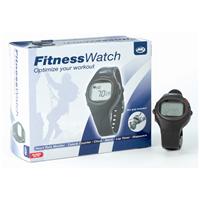London:As the UK obesity rate continues to climb and more than two thirds of the population are deemed clinically overweight, one of the countrys leading medical groups is to offer an innovative Diet Balloon treatment for the first time in the UK.
Billed as a lifestyle changing treatment, the procedure is two-fold offering an innovative, balloon, designed to suppress appetite by filling the stomach, and a six-month diet and wellbeing aftercare programme.
In order to ensure the patient breaks their bad habits and increase their chances of losing the weight and keeping it off, the procedure is managed by a qualified team of experts including dieticians, endoscopists, doctors and nutritionists.
Ultralase Medical Aesthetics (UMA) has introduced the treatment in the UK following the successful launch by its parent company, Corporacion Dermoestetica, in Europe, where over 300 patients have already completed the Diet Balloon programme.
The initial procedure is straightforward and does not involve general anaesthetic or surgery: a silicone intragastric balloon is inserted into the stomach (via the mouth and oesophagus, under sedation) and is filled with liquid so it partially fills the stomach and creates a feeling of fullness.
An intensive support programme is then put in place with a nutritionist, who examines diet, eating habits (including favourite restaurants) and offers a lifestyle bible of tips to keep temptation at bay and stave off bad eating habits for good!
The programme involves regularly scheduled face-to-face meetings, text reminders and access to 24-hour access to a dedicated qualified specialist by phone.
“For patients who are obese and have failed medical therapy, the intra-gastric balloon is a welcomed and effective next step. It can also be used as a bridge to weight reducing surgery or in place of such surgery especially in patients who may be deemed too high an operative risk or who do not want invasive surgery”, says Dr Jude Oben, consultant gastroenterologist.
Anne-Marie Holdsworth, UMAs consultant nutritionist comments: Often with any new diet you have an initial burst of confidence that helps you make the required changes. However, over time, this often wanes and old habits creep back in as your willpower eventually begins to crumble.
Ultralase Medical Aesthetics weight loss programme is designed to help overcome all the obstacles associated with dieting; what to eat when dining out, how to steel yourself from reaching for the chocolate bar when watching your favourite TV programme. Most of all it encourages patients to change their lifestyle habits and break away from the couch and get active instead.
Anne-Marie again: Because the focus is placed firmly on re-educating people about their eating choices over a sustained length of time the Diet Balloon doesnt offer a quick fix weight loss solution. Its aim to promote a total lifestyle change, is what I believe will be a key factor in its success.
For patients who are obese and have failed medical therapy, the intra-gastric balloon is a welcomed and effective next step. It can also be used as a bridge to weight reducing surgery or in place of such surgery especially in patients who may be deemed too high an operative risk or who do not want invasive surgery.
Ultralase Medical Aesthetics will only recommend the procedure after detailed consultations with the patient, and after the Diet Balloon has been inserted there is a continuous after-care programme during the maximum six-month period the balloon remains in place.
In the largest study conducted on intragastric balloon effectiveness, 323 patients underwent the procedure and lost on average 48% of their excess weight. The study, undertaken in Brazil, demonstrated that the balloon was highly effective and safe, with a low risk of major side effects.
Dr. Jude Oben has appeared in:
Channel 5 TV – Doctor-Doctor, August 2006: Obesity and Fatty Liver
BBC TV City Hospital, May 2006: Obesity and Fatty Liver
Obesity figures supplied by ONS survey, < ahref="http:www.statistics.gov.uk">www.statistics.gov.uk
The treatment is currently available at four UK clinics; Hammersmith, Guildford, Chelmsford and St Albans.
A full consultation is required prior to considering the procedure to determine the history and suitability of the patient.
The intragastric balloon procedure was first developed in the 1980s and is recognised as a safe and effective means for achieving significant weight loss amongst obese patients whose health is at risk because of their condition and who have failed to lose and maintain weight loss through weight-control programmes.
It can also be used for severely-obese patients who need to lose weight before surgery (either for obesity or any other condition), in order to reduce surgical risk.







